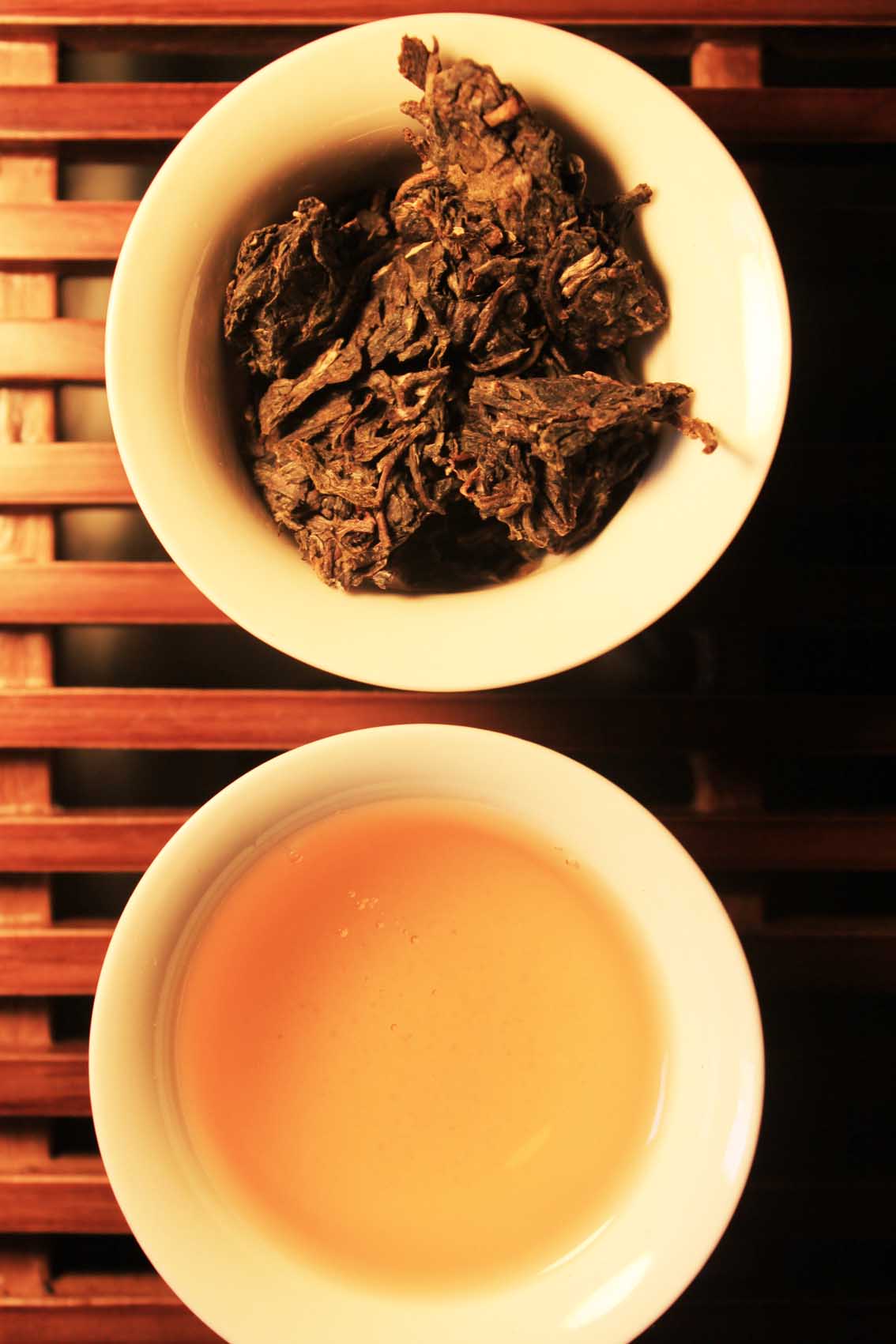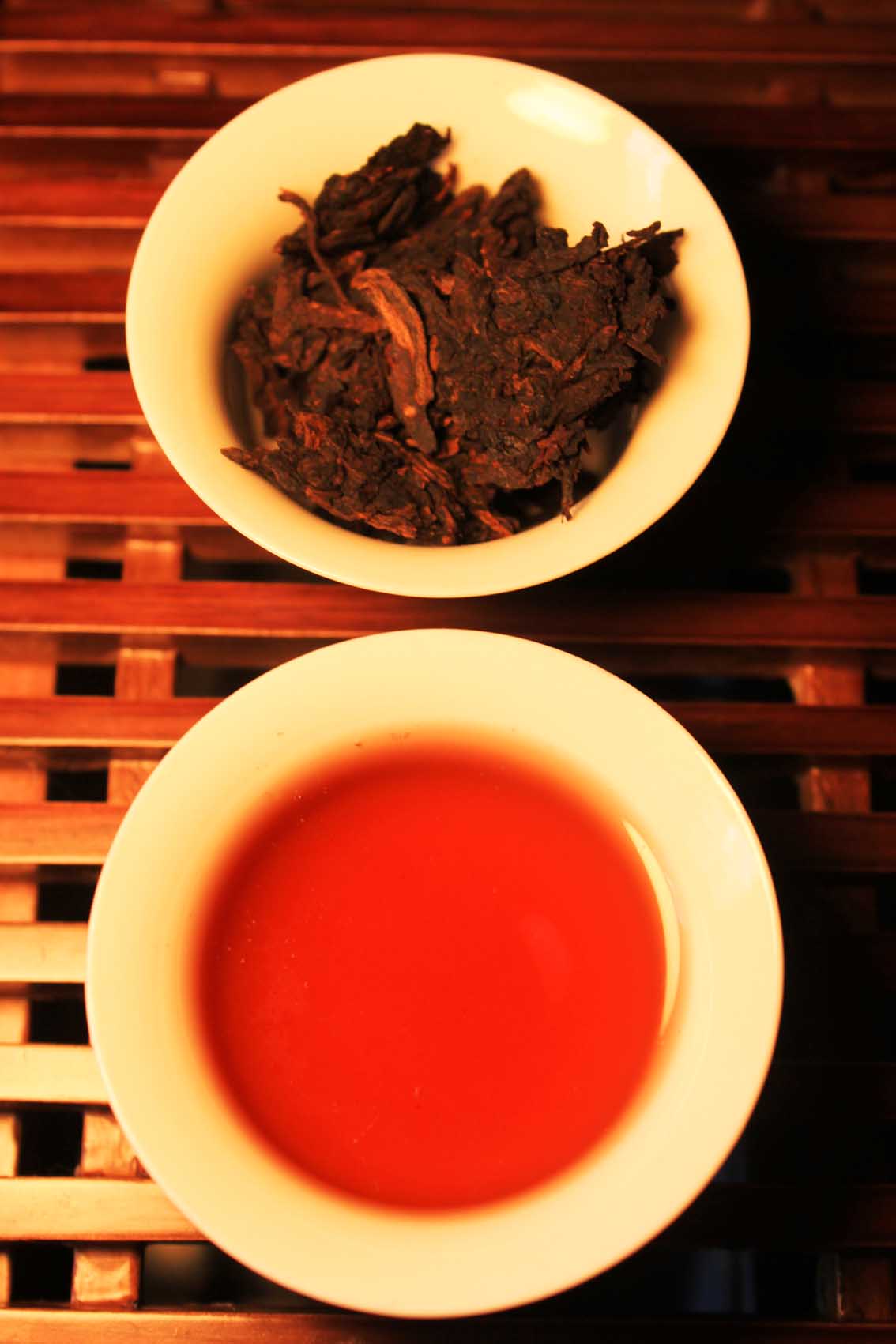Pǔ'ěr 普洱 is the name of a prefecture city in the Chinese province of Yúnnán 雲南. Therefore, formerly Pǔ'ěr was the name for which the tea from this region was known. Nowadays, however, the production of this type of tea has spread to other regions of the province, such as Líncāng 臨滄 and Xīshuāngbǎnnà 西双版纳傣族自治州, whose tea is also known as Pǔ'ěr.
What is known in the West as 'red tea' is actually a type of Pǔ'ěr.
Not to be confused, let's first mention that in China, what is called hóng chá 红茶, literally "red tea", is what we here in the West know as black tea. And what we call red tea is actually a type of Pǔ'ěr, Shú 熟 or 'cooked' Pǔ'ěr. In China, this type of Pǔ'ěr falls into the category of hēi chá 黑茶, "black tea", a type of tea that is characterized by its fermentation process. We should remember that not all types of tea are fermented, but that most are oxidized to a greater or lesser extent.
But there is also another type of Pǔ'ěr, still very unknown in the West, which however is the most appreciated in China. We are talking about Shēng 生 or 'raw' Pǔ'ěr. In fact, this Pǔ'ěr is the only one that has been produced in China for centuries, because the cooked Pǔ'ěr or Shú is a recent invention. Let's see it in more detail.

Formerly tea was compressed in the form of cake or brick to facilitate its transport, which lasted for weeks or even months, between the distant regions of China. On some occasions, during these long trips by land with adverse weather conditions, the tea fermented. This fermented tea was normally considered unusable and was thrown away, until it was discovered that this fermentation softened its astringency and provided new layers of aroma and flavour, improving its qualities.
From then on, tea producers in the Pǔ'ěr region began to intentionally induce this fermentation on green tea. Basically, this fermentation consisted of leaving the tea stored for long periods of time exposed to certain beneficial bacteria. In this way the tea matured or aged in a similar way to wine.
The result of this process is Sheng or 'raw' Pǔ'ěr. Again, like wine, if this tea is consumed shortly after a few years of aging, it is a young tea; on the contrary, if the tea has matured over many years, we get an old Pǔ'ěr. The first is similar to a green tea while the second has already acquired that brown tone in the leaves and a certain characteristic earth flavour.

Pieces of a young Shēng Pǔ'ěr cake and brew.
In the first half of the twentieth century, when the consumption of tea began to become popular throughout the world, the old Pǔ'ěr began to be quoted and to reach very high prices. At this time, tea producers felt the need to accelerate the process, to get produce this type of tea in a shorter time, without having to spend so many years. Thus, in the seventies a new method was developed by which it was possible to produce this fermentation in an artificial way, by wetting the leaves and storing in strictly controlled temperatura conditions. The result was the so-called Shú or 'cooked' Pǔ'ěr, the well-known in the West as red tea. This tea reached, in periods of between one and two months, the characteristics of a Shēng Pǔ'ěr aged over ten to twenty years.

Pieces of a cake and brew of Shú Pǔ'ěr.
In the early 2000s, the aging Pǔ'ěr became a product of speculation and its price skyrocketed, although it has recently fallen again. Due to this demand, some Shú Pǔ'ěr was sold as if it was aged Shēng, deceiving the consumer. In China, however, where there is a predilection for green tea, locals prefer to consume Pǔ'ěr when it is still young, and aged teas are considered largely as a product reserved for export trade.
It should also be noted that the production of Pǔ'ěr can be done using leaves from cultivated plants or leaves of wild trees whose age can be several hundred years, even reaching over 1500 years. These teas from ancient trees are known as Gǔ Shù 古树, 'old tree', and are logically more valuable than those from cultivated plants. Although these Gǔ Shù are normally reserved to produce aged Shēng Pǔ'ěr, there are also occasions in which Shú Pǔ'ěr that are real gems are produced.
In brew, Shēng Pǔ'ěr differs from Shú Pǔ'ěr in that it lacks those notes to earth and wood; its colour is more clear, similar to green tea, sweeter and, if it is a young tea, more astringent than red tea. As for its properties, Shēng Pǔ'ěr is similar to red tea: a great digestive, improves metabolism, helps reduce cholesterol and eliminates toxins. Therefore it is ideal for those people who want to get the benefits of drinking red tea but do not like that taste of earth.

Leaf and brew of Shú Pǔ'ěr (above) and Shēng Pǔ'ěr (below).
For us, it is difficult to choose a favourite. We love both, so different, and appreciate the taste and qualities of both equally. We believe that each tea has its moment.
We hope you found it interesting. Thanks for joining us and see you next time!
